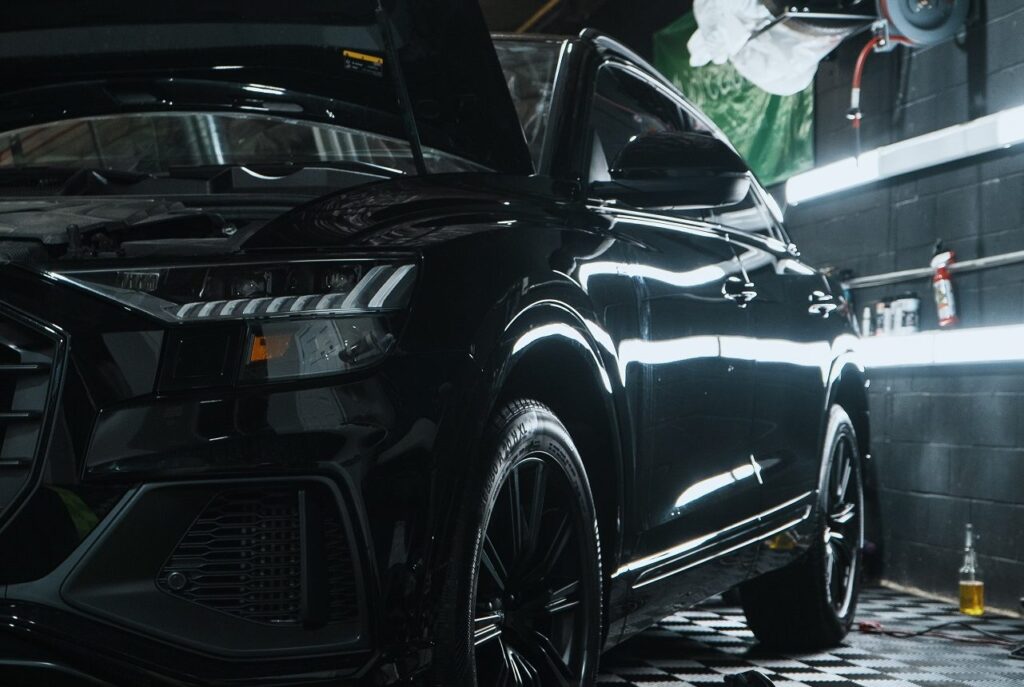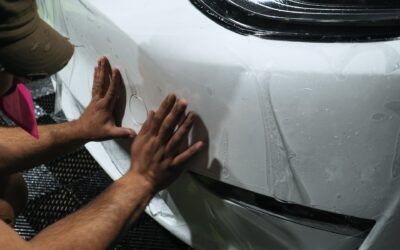The purpose of ceramic coating is to firmly adhere to the paint forming a protective barrier. A ceramic coating finish will provide your vehicle with hydrophobic protection for many years. Even though it is an arduous process, you can remove the ceramic coating if you need to. Here are a few techniques for removing your car’s ceramic coating.

What does “Ceramic Coating” mean?
The exterior of your car can be coated with a ceramic coating to shield it from weather-related damage. Ceramic coatings are semi-permanent.
It’s a liquid nanoscopic paint treatment that goes on your car’s paint and then dries to provide a formidable protection barrier. Silica dioxide (SiO2), which is present in materials like quartz and sand, makes up most of it. After bonding with your car’s paint, the chemicals produce a hydrophobic effect.
Reasons to remove a ceramic coating.
The shine on your car is starting to tarnish. The surfaces no longer feel smooth or slippery and have become sticky. The painted surface is no longer covered in water droplets. More sludge and grime start to gather on the body. If any of the symptoms mentioned earlier appear, your ceramic coating might be deteriorating.
On the other hand, your car may be just dirty. Despite common perception, ceramic coatings can still become dirty. Clean the car if you can.
Some more effective and potent coating removal methods
There are three tried-and-true ways to get rid of an outdated ceramic coating. Before making a choice, refer to the owner’s manual or contact the manufacturer. It is advisable to confirm first because various paints and varnishes respond to cleaning solutions differently. Try it on a tiny area first, not in the center of the hood! Here are the methods that we advise.
Chemical elimination
Ceramic coatings are resistant to many chemicals. However, they are not as resistant to alkaline substances. Though it’s uncertain if they can remove the entire product, they have a history of damaging the top layer, which reduces their effectiveness. It should be remembered that a substance that has the potential to remove a ceramic coating chemically may also have the potential to damage the paintwork underlying.
Claying
Claying still affects the coating to some extent, even though it might not be enough. One is encouraged to remove a sizable piece of the coating from the layer, especially if the coating appears to have eroded quite a lot. Clay is used to eliminate chemicals from a car’s paint’s outside surface and is a composite material with an adhesive property. The clay bar burnishes through the surface while removing pollutants thanks to its abrasive nature. As a result of the clay’s stickiness, contaminants adhere to it. Scratches and marring fall under this category. Claying is a method for removing ceramic coatings, but it has drawbacks, the most notable of which is that it leaves iron pollution behind.
Polishing
Polishing is the method for removing the coating from a vehicle that is most frequently and widely used. This is necessary for the car’s exterior to be cleaned and prepared for the new ceramic coating. For a high gloss, smooth-looking finish, use a coarse polish to remove surface dirt, scratches, swirls, and water spots from beneath the surface.
After removing the old ceramic coating, Where should you have your new new ceramic coating applied?
Budget Auto Detailing offers a staff of highly qualified experts with years of experience and in-depth understanding of all types of vehicles. We always use the best tools at Budget Auto Detailing, and each service package comes with a warranty for the comfort of our clients. If you have any questions, please contact us at 905-633-8880 or info@budgetautodetailing.com. Come us at 1254 Plains Road East #7 in Burlington, Ontario, L7S 1W6.

